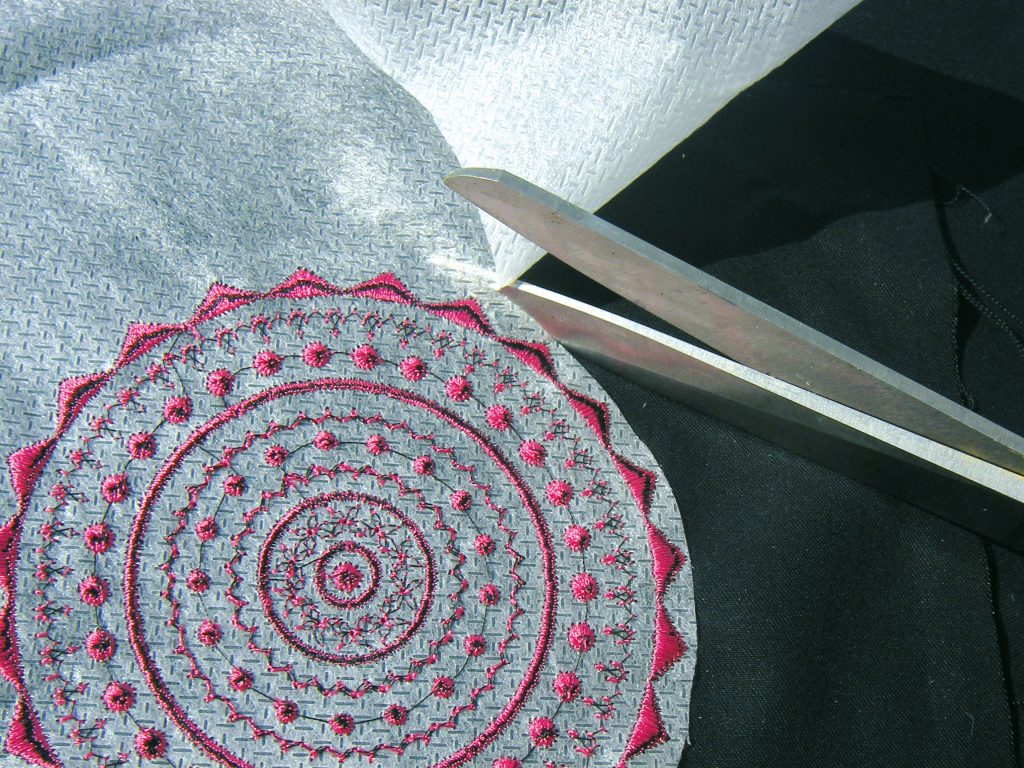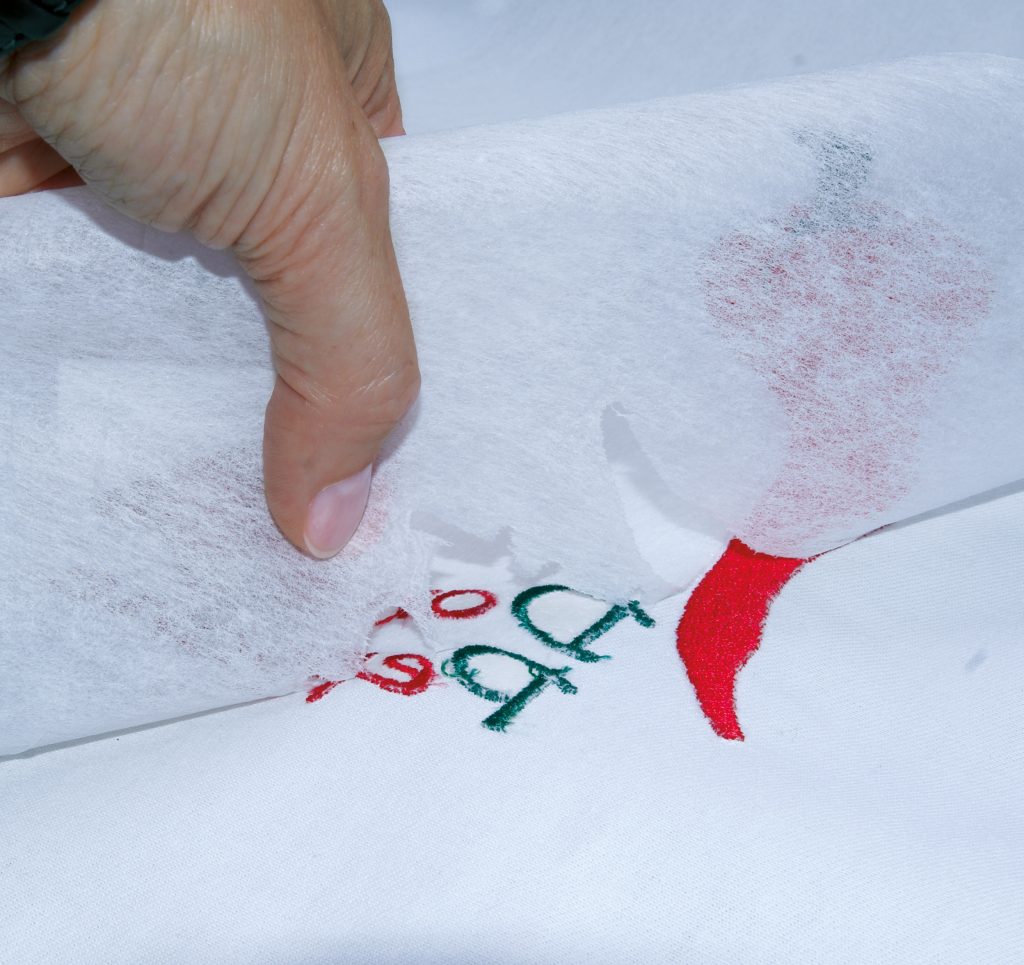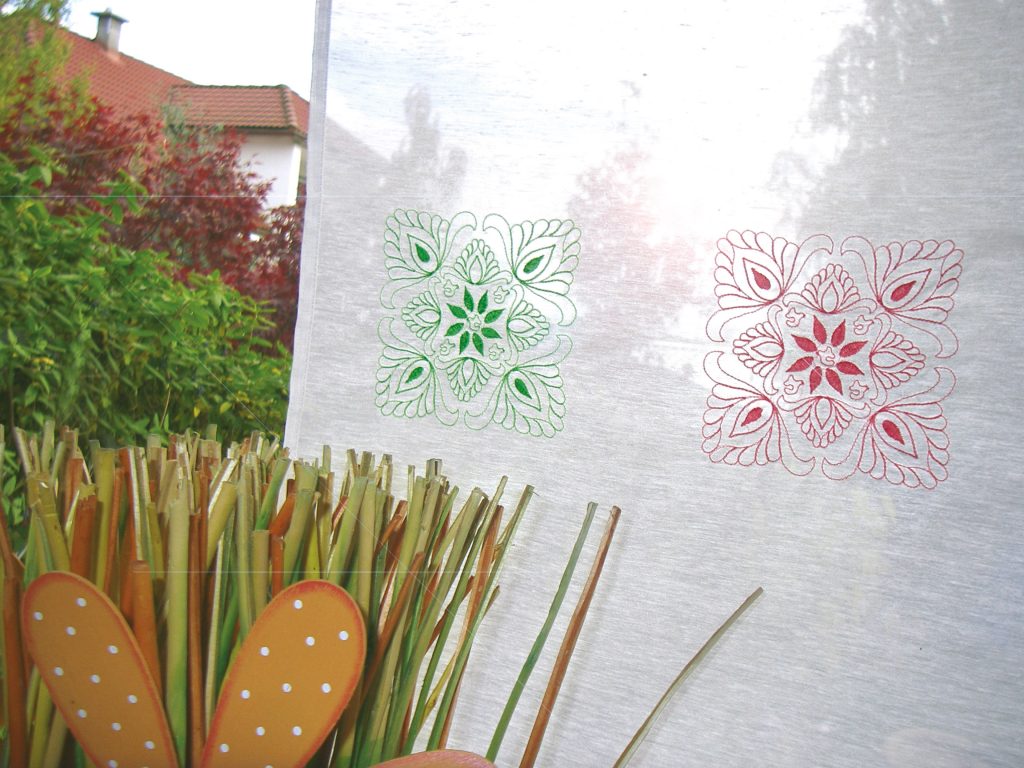About Embroidery Stabilizers – this is why there are so many of them
The Gunold company, based in Stockstadt, Germany, is a leading supplier of embroidery materials and offers over 20 different embroidery stabilizer qualities under its STIFFY brand. A range that is unparalleled! Why the company offers such a high variety, you can find out here.
Within nonwoven technology, embroidery nonwovens represent a special type of nonwoven. They serve to stabilize the embroidery material during the embroidery process and are offered in various types to meet all the different requirements. They are available for tearing off, cutting, ironing-on, as self-adhesive and even as water-soluble. They are distinguished primarily according to their industrial manufacturing process into wet, dry, and thermal nonwovens. “The choice of an embroidery stabilizer is very much subject to the respective taste and feeling of the user,” knows Stephan Gunold, Marketing Manager at Gunold. Some would rather cut away the protruding nonwoven remnants after embroidering, while others prefer to tear away the residues. “The feel of a nonwoven also often determines its use”, he says. “Rather soft and delicate or firm and rough, that is also more a question of personal preference. We want to offer our customers the best range and leave nothing to be desired. That’s why we offer a really wide range of embroidery stabilizers.”
So what’s the difference in nonwovens?
Depending on the staple length, the mixing ratio and the processing direction of the fibers used, the properties will vary. . The most common fibers used for embroidery nonwovens are cellulose, viscose and polyester. Pure or as a mixture and processed with different binders, a wide variety of nonwoven results can be achieved. Plant fibers that are considered sustainable, such as coconut, pineapple, cotton as well as recycled polyester fibers, are already in the test phase and thus could soon complement Gunold’s product range as sustainable embroidery stabilizer variants. As a rule, embroidered textiles are worn on the body. Therefore, this should always be taken into account. The rule of thumb for the correct use is: Thin fabric to be embroidered, thin nonwoven – thick fabric, thick nonwoven. A thin fabric should remain thin and light, you do not want the stabilizer to bulge or scratch when worn, hence a thin embroidery stabilizer. For heavy fabrics, a heavier embroidery stabilizer can be used, as it is more stable.
Coated or uncoated ?
Nonwovens with coating are somewhat more complicated to handle because the nonwoven has to be ironed onto the fabric, but they provide better fixation, i.e. stability, during the embroidery process for stretchy textiles. For non-stretch materials, an uncoated nonwoven can be used and thus a somewhat cheaper option. In addition, white stabilizers should be used for white and light-colored fabrics, and black stabilizers for black, dark-colored fabrics, to avoid the embroidery stabilizer showing through when a garment is worn. The embroidery motif itself should also always be taken into consideration. Especially with small fonts or very fine embroideries, a cut-away stabilizer is recommended so that the delicate embroidery is not damaged by tearing. For larger, more open embroidery designs, tear-away stabilizers are ideal, as the stabilizer remnants can be torn away quickly and over a large area without any problems after embroidering.
Good to know
Although each embroidery stabilizer primarily serves to stabilize during the embroidery process, it invariably has a stabilizing effect in the textile afterwards and thus influences the wearing comfort. Care labels for washing and ironing must also be taken into account. It is worth keeping all your embroideries in mind when making your choice, since for every “most suitable” nonwoven quality there is at least one other real alternative, which in turn can be another real alternative for further embroidery orders. All STIFFY embroidery nonwovens from Gunold are certified according to Oeko-Tex Standard 100 and except for only one quality they are even vegan. The nonwovens are manufactured in Europe according to DIN ISO 14001. AFor more detailed information on the individual embroidery stabilizer qualities from GUNOLD, please visit www.shop.gunold.de.

 Deutsch
Deutsch


